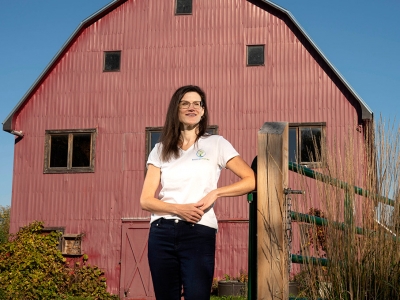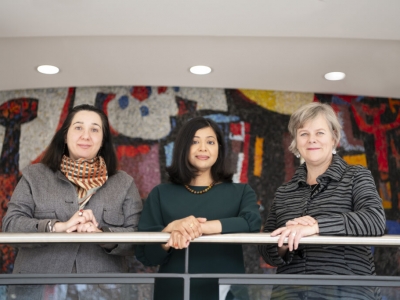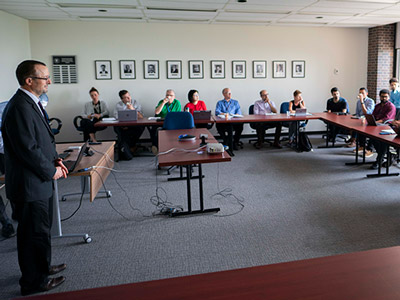By Dan Rubinstein
In mid-May, the Ontario government announced than an independent commission will begin a comprehensive review of the province’s long-term care system this September.
At the time, more than 1,300 residents of Ontario long-term care (LTC) homes and five staff members had died because of COVID-19 — approximately two-thirds of all deaths in the province directly related to the pandemic.
“The system is absolutely broken,” Premier Doug Ford said during a press conference.
For Carleton Social Work Prof. Susan Braedley, who has been researching LTC for more than a decade, that declaration wasn’t news.
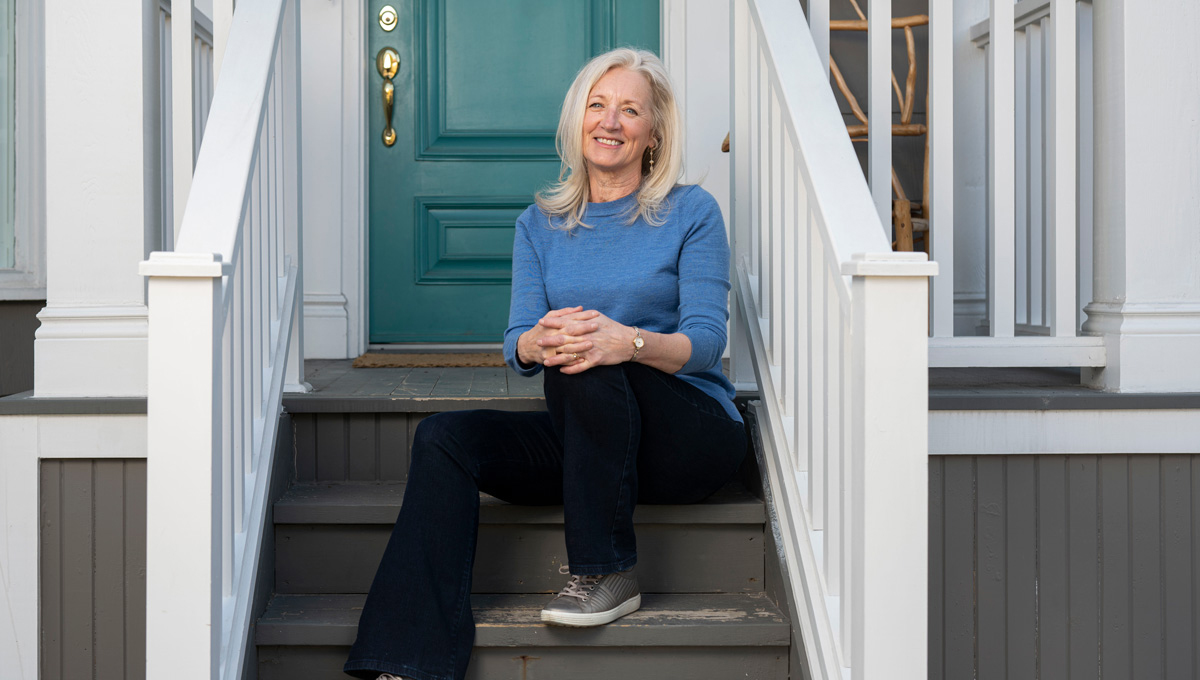
Prof. Susan Braedley
Through a series of regional, national and international projects with an array of collaborators, including Health Sciences Prof. Renate Ysseldyk and several Carleton students, Braedley has seen how to nurture healthy living and working conditions in seniors residences — and what happens when we don’t.
“It’s taken an incredible amount of death to bring appropriate attention — finally — to conditions in long-term care,” she says. “It’s frustrating that it took so much death for this to happen. But there’s a policy window now, an opening, for change. And people in the research community are lining up to help.”
Responding to the notion that Ontario is experiencing two parallel coronavirus outbreaks, one in the general community and one in LTC, Braedley says that these are not two distinct worlds.
The virus may have a more devastating impact on elderly people, but LTC employees live in the community, and the working and living conditions within the LTC system — the heart of Braedley’s research — have made it impossible to prevent transmission.
“They’re not separate pandemics,” she says. “They’re connected by workers.”

Prof. Renate Ysseldyk
Elder Care Plummets Amid Privatization
The quality of elder care in the province started declining dramatically in the late 1990s, according to Braedley, amid the privatization drive of former premier Mike Harris. The system tilted not only toward private for-profit LTC facilities, but also residences owned by corporate chains.
Bed supply became limited at the same time as a rapidly aging population increased demand, leading to long wait lists, with admission reserved for those who most needed care. Meanwhile, the provincial government removed legislated requirements to provide guaranteed hours of care for each resident. The result has been greater resident needs with no corresponding increase in staff hours or resources.
Moreover, even public non-profit facilities ramped up outsourcing of services to private companies that could “thermalize” food that had been cooked and frozen offsite or clean clothing and bedding more cheaply than unionized staff. (Laundry, in particular, can lead to cross-contamination and disease transmission if not done safely, yet saving money trumped quality of care for many LTC operators).
Cumulatively, these changes led to the perfect storm that the pandemic exposed, says Braedley, who focused on children and mental health as a social worker for 17 years before deciding to go back to graduate school in 2003.
She earned her PhD at Toronto’s York University, with postdoctoral work supervised by Sociology Prof. Pat Armstrong, a double Carleton grad and one of Canada’s leading LTC researchers.
Braedley has collaborated with Armstrong on a number of projects since then, including the Social Sciences and Humanities Research Council of Canada (SSHRC) partnership “Re-imagining Long-Term Residential Care: International Promising Practices,” from 2010 to 2018, and “Changes Places: Unpaid Work in Residential Spaces,” a 2016 to 2020 study funded by a SSHRC Insight Grant that looked at the unpaid labour of workers, family members and volunteers in LTC in four countries, with eastern and central Ontario among the Canadian locations.
Braedley also worked on a recent report on LTC models in Toronto, led a project on LTC privatization in Saskatchewan and is part of another major multi-year national research project, helmed by Halifax’s Mount St. Vincent University and supported by a Canadian Institutes of Health Research team grant, looking at quality measures in LTC.
All of this research informed an op-ed that Braedley published in the Ottawa Citizen in late May.
“Let’s be honest,” she wrote. “Our society has had a bad attitude toward care work. We have told ourselves it is work that ‘anyone can do,’ or that it comes ‘naturally’ to women and especially women from specific cultures. That is completely wrong, and this crisis shows it.
“We have an opportunity,” the op-ed concludes, “to learn, address our past mistakes, and shape a system that offers safety, dignity and respect to older people and care workers. We will be glad we did.”
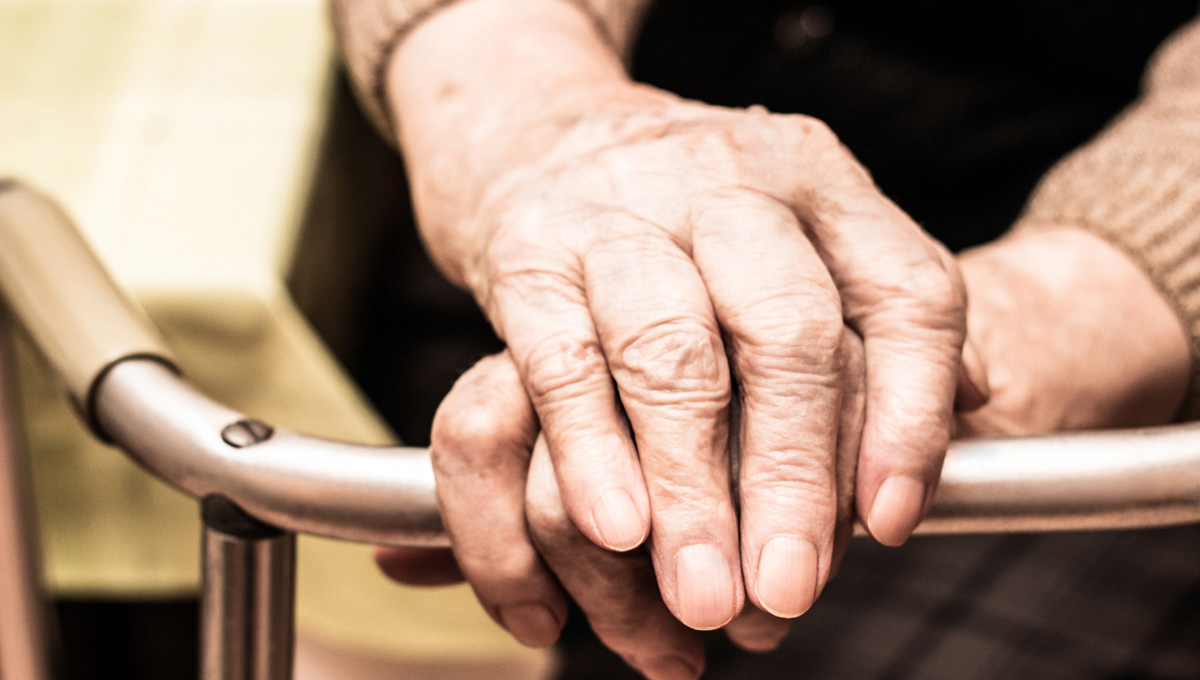
Dedicated Staff in Difficult Conditions
Until physical distancing restrictions were introduced to protect LTC residents, Braedley and her collaborators practised ethnographic research.
They’d spend a week or more at a LTC facility, from early morning until late at night, or sometimes a full 24-hour cycle, observing and talking to residents and workers as they went about their days and completed their tasks.
Although abuse and neglect has been documented over the years, Braedley says that the vast majority of staff are dedicated and extremely hard working, despite very difficult working conditions.
“There’s no labour force I could imagine that’s more caring than LTC workers,” she says. “They work with people who are frail, in pain, suffering from dementia — and it takes tremendous skill to make them comfortable, to help them lead meaningful lives.
“Yet these workers are often treated like they have no skills. They’re paid poorly and are run off their feet. And they understand all of the common sense ideas — like the importance of healthy food — that are often ignored.”
In some LTC homes, workers are allotted 15 minutes to bathe a resident. That’s 15 minutes to undress an elderly woman or man, help them into a mechanical lift, lower them into a bath, clean them while respecting their modesty and dignity, and then help them get out, dry off and get dressed, and then sanitize the tub for the next bath.
“There’s no way you can do that in 15 minutes,” says Braedley, “but that’s a typical window of time in a for-profit care home.”
She has seen workers skip breaks because they won’t leave duties undone. She has seen them bring homemade treats and buy underwear for residents. And she has seen them risk their own physical and mental health, hurting their backs and shoulders and absorbing waves of stress, to care for people.
“We assume that older people have relatives who are around and available to pay attention to them,” she says, “but not everybody does. It’s often workers who befriend residents.”

Promising Practices in Canada and Elsewhere
These days, with in-person research on pause, “virtual ethnography” methods are in development for deployment when residents and workers are no longer in crisis mode.
In the meantime, Braedley and her collaborators are trying to help by sharing information about some of the “promising practices” they’ve seen at creative and dynamic LTC homes across Canada and in countries such as Germany, Norway and Sweden.
For example, facilities where residents cook fresh meals together — a social celebration of healthy food that can be the highlight of someone’s day. Or homes with a safe, contained outdoor courtyard that residents can access by themselves, so they can get fresh air and exercise, or just sit under a tree and not feel like they’re imprisoned, even if they’re experiencing cognitive decline.
“Sometimes, when you see people get outside, with a wheelchair or walker, you see the joy,” says Braedley. “It’s often the simple things in our everyday lives that we take for granted that are restricted in LTC. But it doesn’t have to be like that.”
This contrasts sharply with LTC homes with signs that tell residents not to talk to dining room staff — because they’re outsourced external contractors, not workers who might get to know and develop caring relationships with residents.
Some of these “promising practices” are summarized in a series of short books available for free via the Canadian Centre for Policy Alternatives.
“We’re connecting the dots,” says Braedley, “and these are important tools for disseminating research knowledge.
“We’re sharing knowledge,” she continues. “We tell people what we’ve learned through our research, they tell us what they’re doing and how they’re coping and managing.”
Braedley and others are analyzing what effective LTC organizations are currently doing — “because they’re innovating like never before” — and sharing information with others who could benefit from it.
While watching remotely amid the pandemic, Braedley is noting how seniors service organizations are adapting to digital technologies, such as dementia support groups that are doing online music sessions — including one for Arabic speakers in the Ottawa area — and a “seniors centre without walls” that’s hosting conference calls, guest speakers and even joke sessions over the Internet and phone.
“One of the things I’ve learned over the years,” she says, “is that, like all of us, older adults want their lives to be about something — something more than themselves. They don’t just want entertainment; they want meaning.”

Enhancing Support Services
Although not rooted in residential LTC, Braedley and Ysseldyk are among the researchers collaborating on “Imagining Age-Friendly ‘Communities within Communities: International Promising Practices.”
With study sites in a dozen cities across Canada, including Ottawa, as well as others in Australia, New Zealand, Denmark, Norway and Taiwan, the seven-year, SSHRC-funded project which started in 2018 is exploring: “how can age-friendliness support conditions in which all senior citizens not only maintain healthy active lives, but can participate and create meaning in later life?”
The researchers are looking at seniors who live in the community — especially marginalized groups such as immigrants, LGBT, Indigenous and seniors with dementia — to see how support services can be enhanced and improved.
The Ottawa sites were studied in person in June 2019, and researchers are now looking at the data they collected as well as how service providers are adapting to the new normal.
The pandemic prompted Ysseldyk and Braedley to launch a new project, supported by a COVID-19 Rapid Research Response Grant from Carleton, that will investigate how seniors and their caregivers are coping during the crisis and “will identify promising practices in service delivery and include analysis of how seniors’ services funding, staffing and services models may support and/or restrain crisis response.”
All along, Ysseldyk has been researching services that provide support to seniors living with dementia and their caregivers. Through interviews and observation, she has seen effective programs — such as participatory music sessions — and how these programs are now pivoting to online and telephone interactions, as well as reaching out to new members.
Some seniors are tech savvy and have made this transition fairly smoothly, but others have not, she says, and the increased social isolation everybody is feeling during the pandemic — especially seniors — could lead to more mental health problems.
While there are concerns about too much social media use leading to depression and anxiety among youth, the virtual community is seen as an almost entirely positive way for seniors with mobility challenges to interact, according to Ysseldyk.
“Given our increased reliance on the Internet right now,” she asks, “is online social networking beneficial to older adults?
“Our research shows that it could be helpful, but the results are mixed and still quite modest,” Ysseldyk adds, referring to another project that she has been leading over the past few years, funded by a SSHRC Insight Development Grant, on how online social networking can reduce loneliness and enhance well-being among older adults.
Moreover, there are a range of issues to address — for instance, the need for senior-friendly font sizes and user interfaces, as well as training on digital technologies — before access can be provided equitably, especially within marginalized communities.
“The impact of social isolation among seniors might be much greater than for younger people, in particular seniors who live on their own,” says Ysseldyk. “For so long, age-friendly community initiatives have been telling older adults to get out, to socialize and stay active for their health. Now we’re telling them the exact opposite. What will the long-term health outcomes of all this be? That’s what part of our research is trying to find out.”

Better Working Conditions Will Lead to Improvements
Social Work and Political Economy PhD candidate, Christine Streeter, has worked with Braedley and Ysseldyk on the “Changing Places” and “Imagining Age-Friendly ‘Communities within Communities’” projects respectively.

PhD candidate Christine Streeter
For the former, after months of relationship building, Streeter and another student would immerse themselves in a care home and watch everything and talk to everybody, day and night.
They wanted to find out which processes worked well and which didn’t. They also asked long strings of questions to find out, for instance, how staff got to work, where they parked if they drove, what they paid to park, and so forth — in-depth questions to get a holistic sense of how the facility functioned.
“We want to paint a detailed picture of what’s happening,” she says, “and conditions change constantly throughout the day.”
Echoing Braedley’s comments, Streeter says that it’s tragic that the pandemic has shed light on the desperate need for reform, but she’s hopeful that research can shine a light on why and how changes are needed.
“Some of the changes have to do with physical infrastructure,” she says, “but a lot of them have to do with working conditions. Everything is interconnected, and improving working conditions will lead to so much more.”
Monday, July 6, 2020 in Social Work
Share: Twitter, Facebook

